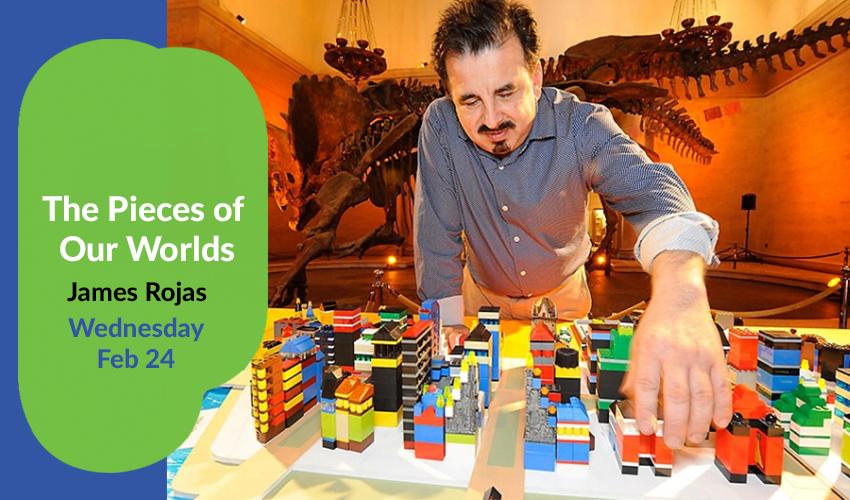James Rojas: The Pieces of Our Worlds - Collaborative Community-Based Urban Revisualization Using Found Objects

James Rojas is an urban planner, community activist, and artist. He has developed a multidisciplinary, arts-based approach that increases access to the urban planning, and design related fields by improving communication tools and animating community outreach and visioning. Mr. Rojas has become an international expert in public engagement especially collaborating with youth, women and immigrants. He has traveled around the US, Mexico, Canada, Europe, and South America, facilitating over four hundred workshops, and building seventy interactive models. He has collaborated with municipalities, non-profits, community groups, educational institutions, and museums, to engage, educate, and empower the public on transportation, housing, open space and health issues. His award-winning method has been replicated and implemented all across the globe. Mr. Rojas holds a Master of City Planning and a Master of Science of Architecture Studies from the Massachusetts Institute of Technology. He is one of the few nationally recognized urban planners to examine U.S. Latino cultural influences on urban design. His influential thesis on the Latino built environment has been widely cited.
Mr. Rojas' method makes people build solutions using found objects which taps into the participant’s spatial, visual and experiential language of place. This language helps people navigate, understand place and stimulates meaningful engagement. Building with objects through a one hour workshop he developed gives participants a visual and tactile platform that everyone can reflect, understand, and express themselves in developing solutions regardless of typical barriers, such as language, age, ethnicity, and professional training. By using their bodies makes it possible for the participants to investigate individually and collectively their real and imagined landscapes in a direct way, with their bodies, hands, and objects changing their viewpoint and posture, focusing and standing back, touching and changing things. The first workshop activity asks participants to ‘Build their favorite Childhood Memory” in ten to fifteen minutes choosing from the thousands of objects provided. This activity helps participants to reflect on and learn the value place. Once the time is up individuals share their memory with the group helps every bond and validates everyone experiences. The second activity is collaborative. Participants are placed in teams and are asked to build together in fifteen minutes to solve a problem such as “Build your ideal city” choosing from the same and more objects they used previously. The communal nature of this process provides a visual and tactile platform that everyone can participate in to develop solutions regardless of typical barriers, such as language, age, ethnicity, and professional training. Through building with, participants are able to share ideas quickly by arranging and rearranging objects using color, form, texture and placement of them as a visual communication tool. Team members quickly test their ideas, concepts, and design interventions with others. Through visual, verbal, and spatial negotiations, new ideas emerge from existing ones with the help of others. Through this rapid-fire prototyping the solutions begin to shape the models. Once the time is up, each team is asked to present their solutions using the model. People are deeply engagement because of they and hearing and seeing the solutions.

